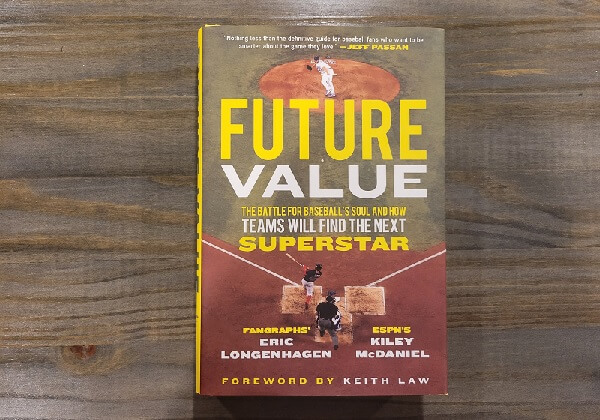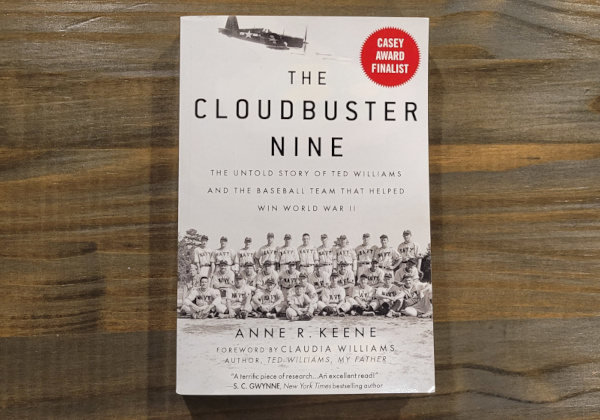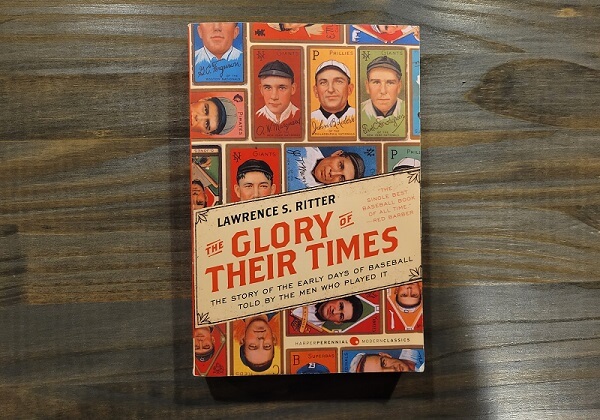Book Review: Future Value - Eric Longenhagen & Kiley McDaniel
by Fred Hofstetter on January 8, 2023Discover how amateur and pro baseball scouting is done, how departments are built, and how organizations find talent in Future Value.

A deep dive into modern amateur and pro scouting.
Future Value: The Battle for Baseball's Soul and How Teams Will Find the Next Superstar

Add this one to your library to exercise your player evaluation muscles. It might just change the way you watch baseball players.
Buy on AmazonAn illuminating peek at how scouting is done.
Longenhagen and McDaniel’s Future Value exhaustively describes the business of baseball talent acquisition.
I found “The Battle for Baseball’s Soul” set an expectation that didn’t come to fruition. In a good way.
Read enough modern baseball books and you may unconsciously group some of them into the “Analytics Revolution” category. They aren’t all bad. But there are many. And their voices are similar. Analytics has dominated baseball discourse and decision-making, and it’s manifested in an avalanche of literature obsessed with economics, market inefficiencies, mathematics, etc.
To borrow their aesthetic: the market is saturating.
Given these are FanGraphs writers and a title like this one, my fear was another heavy-handed Moneyball-wannabe. But that’s absolutely not the case in Future Value. There’s some narrative speaking to these themes, but it’s not the bulk of the book’s content. And not what makes it valuable.
Future Value provides a comprehensive overview of how scouting is done, including explaining common vocabulary, department structure, unique approaches, and how scouting is evolving. If you are at all curious about how professional baseball teams find and evaluate players, you should read this book.
"Taking studies and using the logic gleaned from them is smarter than trying to overfit the past to explain the future, assuming everything will continue as it has and essentially turning off our reasoning ability." - pg. 326
How readable?
This book is very readable in terms of sentence structure and word choice. Readers of all ages can take it on, though there are a few naughty swear words sprinkled here and there, if that matters to you. Not sure I would recommend for most kids anyway. Unless they dream about about being the shrewd and savvy suit in the executive suite when the bases are loaded in the bottom of the 9th with a full count. That wasn’t me. Now it is. Sometimes. But not then.
Descriptors: substance, density, volume. The book bursts at the seam with substance. I’d recommend taking this on in smaller chunks, and be sure to read carefully to chew, swallow, and digest every sentence. Some accidental skimming can really set you back.
My favorite part.
Their general breakdown of different methods of building scouting departments – with team-by-team analysis of where each franchise currently stands (as of 2020).
Until opening this book, I hadn’t realized how little I knew about how teams construct scouting departments. Different ways of coordinating national, regional, area, and local scouting strategies. Should individual scouts cover certain geographical regions? Distinct professional levels (A-, A+, AA, AAA)? Pitchers or hitters only? This book covers some of the most common setups, how teams generally do things, and how very little is universal to every team.
What could I possibly not like?
Back to readability.
Consider the source and material. Two journalistically-inclined writers pack 100lbs of substance into a 50lb bag. There’s little room in this volume for flowery prose or wistful baseball romanticism. Practicality is the priority. I find it refreshing. You might not.
The book does not gracefully conclude. Do not hold your breath for a clear takeaway or call-to-action. That’s not what this is for. The authors back up a dump truck of of substance (back to that word) and it’s up to you to do with it what you will. Know how an AP article just sort of ends all of a sudden? That’s kind of how this book wraps up.
Overall, a nitpick. But if you like an author to artfully usher you to a feel-good finale, the conclusion to Future Value feels brutish.
Summary.
This book is a great reminder of the spectacular confluence of events and coordination of countless professionals responsible for the 26-man roster in each dugout every night at the ballpark. There’s a tremendous amount of investment and energy behind every pitch. I really had no appreciation for many layers of the process before reading this book.
If you’re interested in how MLB teams are built and the overall business of baseball, I’d consider this a must-read (even as I write this in 2023).

The latest articles

Book Review: The Cloudbuster Nine - by Anne R. Keene
by Fred Hofstetter on January 30, 2024Keene's comprehensive book tells several stories behind the V-5 Pre-Flight School in Chapel Hill, North Carolina: home to one of the rarest, greatest baseball teams in American history.

Book Review: The Glory of Their Times
by Fred Hofstetter on February 11, 2023There's good reason why The Glory of Their Times appears on every "best baseball book of all time" list you'll find anywhere.

Book Review: Future Value - Eric Longenhagen & Kiley McDaniel
by Fred Hofstetter on January 8, 2023Discover how amateur and pro baseball scouting is done, how departments are built, and how organizations find talent in Future Value.

Baseball players wear hats because wearing a hat is correct
by Fred Hofstetter on April 9, 2022Practicality explains why baseball players may want to wear a billed cap. But why does every player always wear a hat? Because it’s the right thing to do.
